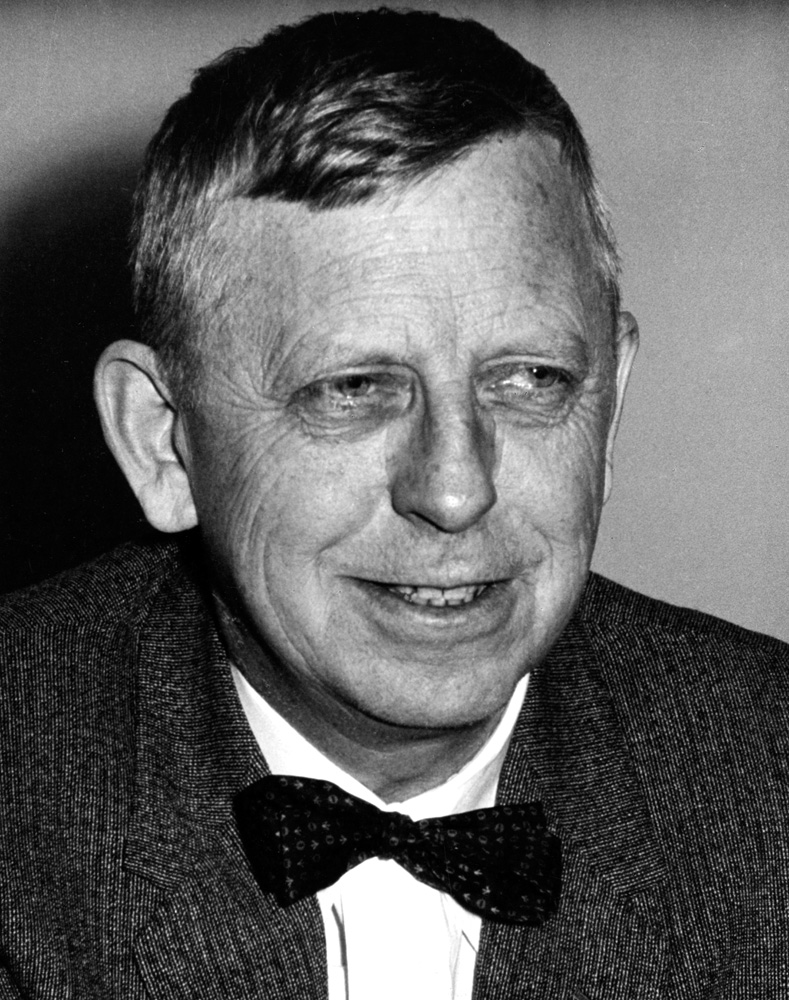William “Willie” H. Zachariasen was a physicist and consultant at the University of Chicago’s Metallurgical Lab (“Met Lab”) during the Manhattan Project. His major contributions to the Manhattan Project and science, in general, were in the field of X-ray crystallography.
During World War II, Zachariasen worked at the Met Lab and performed all the X-ray identification work of the Chicago-based site. He was a signer of the Szilard Petition. His X-ray analyses of plutonium and the information obtained from them were essential for understanding plutonium chemistry. Using his knowledge of elucidating structures from powder diffraction data and rare earths and their 4f-contraction, he was able to perform these analyses.
Early Years
William H. Zachariasen was born on February 5, 1906 in Langesund, Norway. He was the son of a sea captain.
Zachariasen attended the University of Oslo and studied under the geochemist Professor Goldschmidt. While studying at Oslo (1923-1928), he helped perform the first application of X-ray diffraction to the field of geochemistry. In 1925, he published his first paper at the age of nineteen years old. The paper focused on the X-ray diffraction studies of oxides.
Three years later, at the age of twenty-two years old, he received his Ph.D., which made him the youngest person to ever do so in Norway. Zachariasen did his Postdoctoral Fellowship at Sir Lawrence Bragg’s laboratory. He began his study of silicate structure at this laboratory, and his studies would be instrumental for his later work in understanding the structure of glass.
After briefly returning to the University of Oslo, he left to join the Physics Department at the University of Chicago at the request of Nobel Laureate Arthur Compton in 1930. Prior to departing for the United States, he married Ragni Durban-Hansen, the daughter of Norwegian geochemist W. C. Brøgger. He would work at the University of Chicago for forty-four years.
In 1932, Zachariasen published his pioneering paper on the structure of glass. Through 1941, he focused his studies on complex oxy-anions and the diffuse scattering of X-rays due to thermal motion.
In 1941, he became an American citizen. By this point in his life, he had published eighty experimental and theoretical papers and become a global figure.
Later Years
In 1945, Zachariasen published the book, The Theory of X-Ray Diffraction in Crystals. From 1948 to 1949, he published twenty-six more papers.
During the 1950s, Zachariasen served as a summertime consultant at Los Alamos. While working at Los Alamos, he solved the three structures of plutonium metal (alpha, beta and gamma plutonium) from powder patterns alone.
In 1952, Zachariasen was the first to use “Direct Methods” for determining crystal structures. In his initial attempt, he successfully used this method to determine the structure of boric acid.
Between 1963 and 1967, he worked on solving the problem of secondary extinction in X-ray crystallography. In performing measurements on quartz, he realized the fundamental error made by Darwin in his extinction effect equations. Zachariasen’s practical solution was a landmark paper in the diffraction theory and allowed for more precise structure determination in X-ray crystallography.
In the 1970s, he retired from the University of Chicago, and he and his family relocated to Santa Fe, New Mexico. He died on December 24, 1979 in Santa Fe.
Scientific Contributions
Zachariasen made numerous contributions to the field of X-ray crystallography including determining the structures of plutonium and glass and solving the problem of secondary extinction. During the period of 1965 to 1975, Zachariasen and his work were cited 3600 times, which is about once a day for ten years.
Linus Pauling called Zachariasen as “classed among the outstanding scientists of the twentieth century, and at the top in the field of inorganic crystal structures.”





